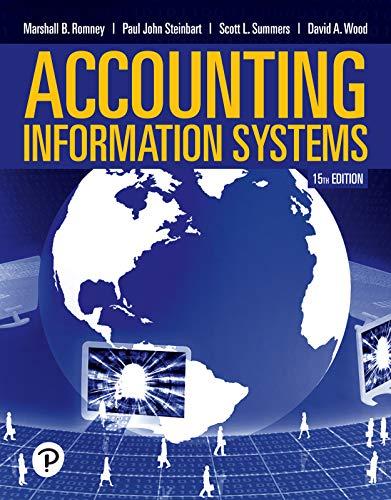
 After you have done the above exercises, what relation do you see between book-tax difference (the amount of balance sheet account for financial reporting and the amount for tax reporting) and deferred tax liability and deferred tax asset account? For the depreciation in case 7, it is the difference in the book value of asset.
After you have done the above exercises, what relation do you see between book-tax difference (the amount of balance sheet account for financial reporting and the amount for tax reporting) and deferred tax liability and deferred tax asset account? For the depreciation in case 7, it is the difference in the book value of asset.
Q1. Identify future taxable amounts and future deductible amounts A difference of when a revenue (or gain)/expense (or loss) is included in financial income and when it is included in taxable income is referred to as a temporary difference. A temporary difference originates in one period and reverses in a subsequent period. Temporary differences will result in taxable or deductible amounts in future periods. A future taxable amount means future taxable income will be increased relative to pretax accounting income, whereas a future deductible amount means taxable income will be decreased relative to accounting income, when that temporary difference reverses. Deferred tax liabilities are recognized for all taxable temporary differences. Deferred tax assets are recognized for all deductible temporary differences and operating loss carryforwards). Listed below are 7 causes of temporary differences. For each temporary difference, follow the example 1 to 1) write the journal entry and highlight balance sheet account, 2) highlight or circle the items in the shaded parts of the statement. 1. Accrual of loss contingency, tax-deductible when paid. Journal entry and related balance sheet account in the year the temporary difference arises: Financial accounting Tax reporting Loss XX No entry Liability - Loss Contingency xx A revenue (or gain)/expense (or loss) is recognized in the income statement before/after it is reported in the tax return. This temporary difference results in a future taxable/deductible amount. Therefore, a deferred tax liability/asset needs to be recognized in the current period. 2. Newspaper subscriptions: taxable when cash is received recognized for financial reporting when the performance obligation is satisfied. Journal entry and related balance sheet account in the year the temporary difference arises: Financial accounting Tax reporting Cash xx Revenue xx A revenue (or gain) /expense (or loss) is recognized in the income statement before/after it is reported in the tax return. This temporary difference results in a future taxable/deductible amount. Therefore, a deferred tax liability/asset needs to be recognized in the current period. 3. Prepaid rent; tax-deductible when paid. Journal entry and related balance sheet account in the year the temporary difference arises: Financial accounting Tax reporting Rent expense xx Cash A revenue (or gain)/expense (or loss) is recognized in the income statement before/after it is reported in the tax return. This temporary difference results in a future taxable/deductible amount. Therefore, a deferred tax liability/asset needs to be recognized in the current period. 4. Accrued bond interest expense; tax-deductible when paid. Journal entry and related balance sheet account in the year the temporary difference arises: Financial accounting Tax reporting No entry A revenue (or gain)/expense (or loss) is recognized in the income statement before/after it is reported in the tax return. This temporary difference results in a future taxable/deductible amount. Therefore, a deferred tax liability/asset needs to be recognized in the current period. 5. Warranty expense; estimated for financial reporting when products are sold; deducted for tax purposes when paid. Journal entry and related balance sheet account in the year the temporary difference arises: Financial accounting Tax reporting No entry A revenue (or gain) /expense (or loss) is recognized in the income statement before/after it is reported in the tax return. This temporary difference results in a future taxable/deductible amount. Therefore, a deferred tax liability/asset needs to be recognized in the current period. 6. Advance rent receipts on an operating lease as the lessor); taxable when received. Journal entry and related balance sheet account in the year the temporary difference arises: Financial accounting Tax reporting Cash xx Rent revenue xx A revenue (or gain)'expense (or loss) is recognized in the income statement before/after it is reported in the tax return. This temporary difference results in a future taxable/deductible amount. Therefore, a deferred tax liability/asset needs to be recognized in the current period. 7. Straight-line depreciation for financial reporting, accelerated depreciation for tax purposes. Assume purchase at $10,000, straight line for financial reporting over five years. For tax return $5,000 depreciation deduction is allowed for first year. Journal entry and related balance sheet account in the year the temporary difference arises: Financial accounting Equipment 10,000 Cash 10,000 Depreciation expense Accumulated depreciation Tax reporting Equipment 10,000 Cash 10,000 Depreciation expense 5,000 Accumulated depreciation 5,000 A revenue (or gain)/expense (or loss) is recognized in the income statement slower/quicker than it is reported in the tax return. This temporary difference results in a future taxable/deductible amount. Therefore, a deferred tax liability/asset needs to be recognized in the current period

 After you have done the above exercises, what relation do you see between book-tax difference (the amount of balance sheet account for financial reporting and the amount for tax reporting) and deferred tax liability and deferred tax asset account? For the depreciation in case 7, it is the difference in the book value of asset.
After you have done the above exercises, what relation do you see between book-tax difference (the amount of balance sheet account for financial reporting and the amount for tax reporting) and deferred tax liability and deferred tax asset account? For the depreciation in case 7, it is the difference in the book value of asset. 





